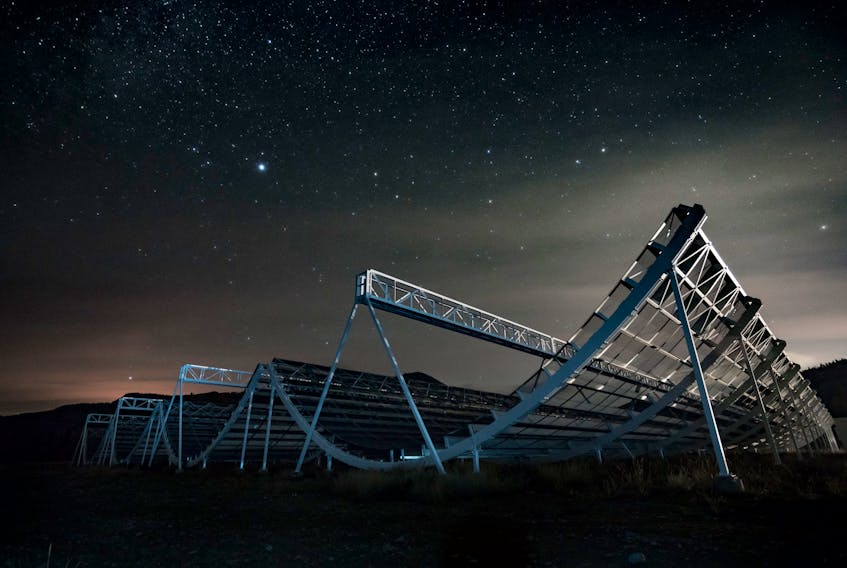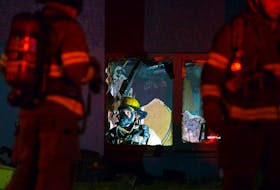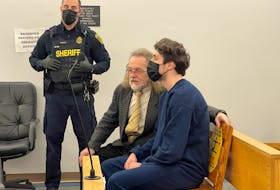As a child, Victoria Kaspi marvelled at the summer night sky from the mountains north of her hometown of Montreal.
“I went to summer camp up in the Laurentian Mountains where you don’t have the bright lights of the city. Up there it was really fun to lie on the shore of the lake, looking at the sky and that’s probably where it started.”
Although she wasn’t the typical astronomy geek growing up - “I didn’t have my own telescope” - those starry skies of childhood reentered her life as a graduate student at Princeton University in 1993.
She had to decide on a PhD topic after doing her undergraduate studies at McGill University so “I thought I’d give astronomy a shot and the rest is history," she said in an interview from Montreal on Thursday.
And what a history. Check out her Wikipedia entry and you’ll find a long list of awards and honours, including the first woman to win Canada’s top science prize, the Gerhard Herzberg Medal, in 2016.
Her research specialities have included neutron stars - those bizarre objects that have the density of billions of tonnes of matter packed into a city-sized space - and pulsars, another incredibly compact object that radiates electromagnetic energy across vast stretches of ospace.
Most recently Kaspi has turned her attention to an even more mysterious astronomical phenomenon: fast radio bursts or FRBs.
These radio waves are only thousands of a second long and they’re fairly common.
“Our best estimates suggest that every day, if you could look across the full sky and detect them you’d see something like a thousand of them every single day. So it’s something in the universe that’s ubiquitous and incredibly powerful and therefore it’s quite a mystery.”
The powerful part relates to distances an FRB has travelled in order for Earthbound astronomers to even detect it.
“It’s being made by some sort of object that we don’t understand at very great distances from the Earth. In fact we believe that they’re coming from way outside our own Milky Way galaxy at the furthest reaches of the universe looking back billions of years in time in the early stages of the universe.”
It’s possible that RFBs are generated from neutron stars, Kaspi said, since those objects have the tremendous energies and magnetic fields you’d need to create such powerful radio waves “but nobody knows quite how that happens or how that could happen. We know lots of neutron stars in our galaxy and we have never seen any of them produce the sorts of explosion energies that the most distant fast radio bursts can do. So there’s a bit of a mystery.”

Unfortunately for science fiction fans (and that includes Kaspi, a fan of Star Trek and the movie Contact starring Jodie Foster as a radio astronomer), it’s not likely these bursts are being sent by extraterrestrial ham radio buffs.
“The bulk of the evidence suggests that it’s a purely natural phenomena."
Kaspi and her team at the McGill Space Institute hope that their work with a specialized telescope in Penticton, B.C., will yield some answers. The CHIME telescope - short for Canadian Hydrogen Intensity Mapping Experiment - uses a cylindrical antenna system that can scan large parts of the sky, as opposed to the traditional parabolic radio telescope dish that can only see one point at a time.
MacLennan Memorial lecture
She will speak about these mystifying radio bursts and other celestial phenomena tonight when she delivers the Dan MacLennan Memorial Astronomy lecture sponsored by Saint Mary’s University.
The virtual presentation will include lots of slides and photos of the CHIME telescope, she said. (You can register for the lecture here).
“People will be able to see how we see these radio bursts. I’ll tell you the whole story of the very intriguing mystery.”
As a female astrophysicist, Kaspi is only too aware she’s an unusual phenomenon herself. She said the gender gap in the STEM fields is narrowing but too slowly.
“When I was a graduate student 30 odd years ago, the number of women faculty professors in physics was very, very small and we all had very great plans for improving it,” she said.
“The numbers have come up, I can’t say they haven’t, but still there’s many departments in universities in North America where it’s still single-digit percentages.”
About 33 per cent of the faculty at the McGill Space Institute, which she leads, are women, she noted.
“There are improvements that have happened that would have been unthinkable 30 years ago but I think there’s so much more room. There’s so many interesting topics in astrophysics to study - I just think some of our greatest minds are not somehow finding their destiny, finding their potential, for complicated cultural reasons. ...
"(We) have double down in efforts to ensure that in the hiring process, it’s fair, and we get things like unconscious bias training, which is very valuable, and we’ll just have to see what we can do going forward."









